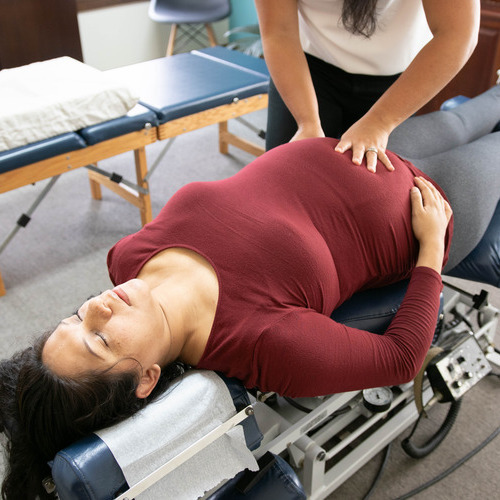Carpal tunnel syndrome is a condition that affects the hands and wrists, often causing discomfort or numbness. While commonly associated with repetitive hand movements or chronic health conditions, pregnancy can also trigger symptoms of carpal tunnel syndrome. Here is more information on why it occurs during pregnancy, how it manifests, and what can be done to alleviate symptoms:
Developing During Pregnancy
During pregnancy, the body undergoes significant changes that can lead to the development of carpal tunnel syndrome. One of the primary contributing factors is fluid retention, a common occurrence during pregnancy. This fluid buildup can create increased pressure in the carpal tunnel, a narrow passage in the wrist that houses the median nerve.
When the median nerve becomes compressed, it can lead to the characteristic symptoms of carpal tunnel syndrome. Hormonal changes also play a role by contributing to swelling and tissue inflammation, which can further narrow the space. These physical changes may heighten the risk for pregnant individuals, particularly during the second or third trimester.
Exploring Symptoms
The symptoms of this syndrome during pregnancy can vary in intensity but are often similar to cases unrelated to pregnancy. The most common symptoms include numbness, tingling, and pain, often described as a burning sensation, primarily affecting the thumb, index, middle, and part of the ring finger.
Pregnant individuals might also notice that symptoms are worse at night or upon waking. This may happen due to fluid redistribution when lying down or bending the wrist during sleep. Additionally, weakness in the hands may occur, making it challenging to grip objects or perform fine motor tasks.
For some, symptoms may be mild and intermittent, resolving after delivery when hormone levels and fluid retention decrease. For others, symptoms can be persistent and disruptive, warranting further attention.
Managing Symptoms During Pregnancy
There are several strategies to address symptoms during pregnancy. These interventions aim to reduce pressure on the median nerve and alleviate discomfort.
- Wrist Splints: Wearing a wrist splint, especially at night, can help keep the wrist in a neutral position, reducing pressure.
- Hand Exercises: Gentle stretching and strengthening exercises can improve circulation and relieve nerve compression in the wrist and hand.
- Posture and Ergonomics: Maintaining proper posture and adjusting the positioning of wrists while performing activities can reduce strain.
- Cold Compresses: Applying a cold compress to the wrist may reduce swelling and provide temporary relief.
- Fluid Intake Regulation: Monitoring salt intake and maintaining proper hydration can help manage fluid retention, thereby reducing swelling.
If these measures do not bring relief or symptoms worsen, consulting a healthcare professional may be necessary. Treatments such as physical therapy or corticosteroid injections could be used in more severe cases. Surgical intervention is an option after pregnancy if symptoms persist.
Learn More About Carpal Tunnel
Carpal tunnel syndrome is a frequent occurrence during pregnancy due to factors such as fluid retention, hormonal changes, and repetitive hand movements. Symptoms like pain, numbness, and tingling often affect daily activities but can typically be managed through certain measures. Symptoms may resolve naturally after delivery, but persistent cases should be addressed with medical guidance. Understanding the connection between pregnancy and this syndrome allows individuals to take effective steps to manage the condition.
- EA Fitness – Transform Your Health Today!
- Why Is Mental Health Important – Transform Your Life By Prioritizing It!
- How To Improve Gut Health – Boost Digestion, Energy & Immunity!
- Is Coffee Beneficial To Health – Expert Insights You Can’t Afford To Miss!
- TimesHealthMage Diet Plans For Diabetics – Manage Blood Sugar The Smart Way!


Leave a Reply